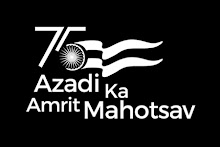11.12.08
Pune's Mutha restoration plan snippets
A beautiful Mutha with clean water flowing through it and rich flora and fauna on its banks. You take a boat ride through the river to reach office and dine at a floating restaurant in the evening. You go sailing or kayaking too on weekends. While all this might look like a distant dream for Punekars who have witnessed the deteriorating condition of the river, the civic body has drawn up ambitious plans to make it a reality in the next three years. The Pune Municipal Corporation (PMC), along with consultancy firm Naik Environment Research Institute Limited (Neril), has completed the detailed project report (DPR) of the “river restoration and navigation” project and sent it to the Union ministry for environment and irrigation department for approval. If all goes according to the plans, the river will be restored and a navigation project on the 16.12-km stretch will be in place after two monsoons. The initiation point is Rajaram bridge (8.88 km from Khadakwasla) and the termination point is Kharadi (25 km from Khadakwasla). Municipal commissioner Pravinsinh Pardeshi said it is not merely a dream but very much a possibility for Pune. “River navigation is a very energy efficient mode of transport and causes minimum pollution. All the necessary clearances have been sought and I am positive we will be able to go ahead with this,” he added. CMD of Neril, commander (retd) D.D. Naik, said the plan basically includes restoration of the river with stabilisation and rejuvenation of riparian ecosystem, biodiversity conservation, bioremediation and beautification of the nullahs draining into the river and flood control and disaster management. “One of the important issues is availability of water for the proposed channel. We are working on the possibility of minimal or nil water release from the Khadakwasla dam. With the current sewage treatment plants (STPs) and two more proposed ones of PMC, there will be a discharge of 5 MCM of treated water per year. Moreover, three bunds have been proposed in the DPR to be able to store water. They will be at suitable distances to prevent stagnation of water,” he said. ‘Waterway spin-off of river restoration’ Naik said the location of the bunds, shape of the channel and flow have been “analysed on computer-based mathematical modelling studies which are accepted across the world and take into account obstructions such as bridges”. He pointed out that another inherent part of the report to ensure desired storage and enhanced water carrying capacity of the river is to have management of city waste water by evacuating sewage from the river. “Currently, 68 per cent sewage is being treated and after the newly-commissioned STPs, 80 per cent will be treated. Hence, a system has been proposed wherein there will be berms along both the river banks for carrying evacuation pipes. The excess untreated sewage will be bypassed into the pipes, which will be treated at the proposed single point collection unit downstream,” he said. Naik said the navigation project is an off-spin benefit of the river restoration plan. “The navigation plan includes components like lock gates at the three proposed bunds which are located at 300 metres downstream of the Sangam bridge, 300-metre downstream of the Kalyaninagar bridge and at the Mundhwa bridge.” The navigation infrastructure includes jetties and marinas, yards for passenger boats and barges, entry and exit plazas, boat stops and ferry stations, ticket counters, parking facility with other associated structures, a water ambulance with first aid and search-and-rescue teams. According to a traffic management study conducted by Neril and the PMC in the first year of the project, the proposed water way will be able to carry 61,500 passengers and 46,000 two-wheelers. In the third year and future, the capacity will be as much as 1.40 lakh two-wheelers and 1.85 lakh passengers per day. “It is often observed in Pune that citizens want to have the comfort of their personal vehicles, so the plan is to have boats than can carry two-wheelers. So up to the start point, people can come on their bikes, travel on the boat and get down with their bikes and proceed to their destinations. This will to some extent reduce the congestion on roads parallel to the Mutha river,” Naik said. The tourism activities that have been planned include ecological parks, camp sites, water parks, tour boat rides and floating markets.
Subscribe to:
Post Comments (Atom)




No comments:
Post a Comment